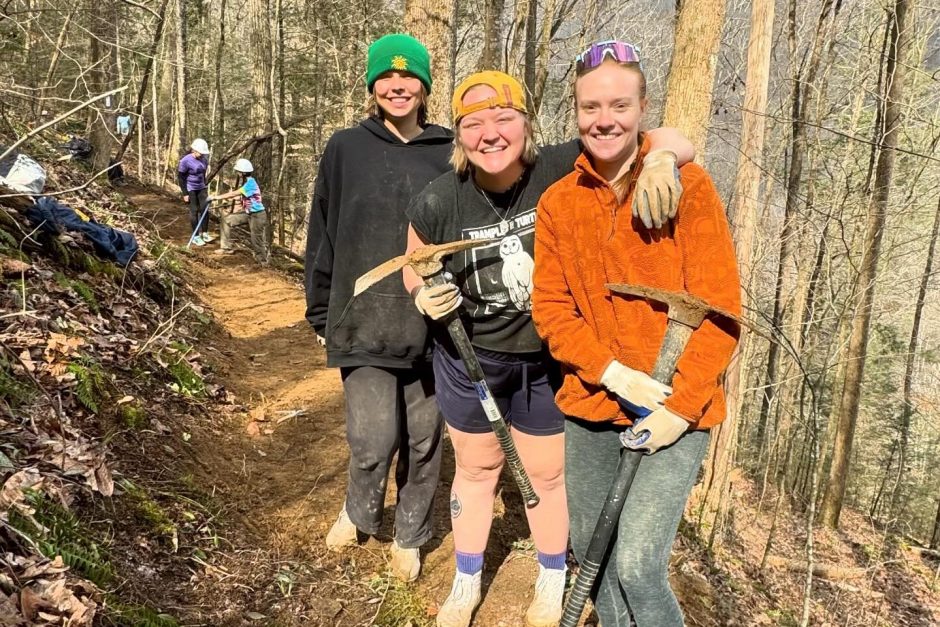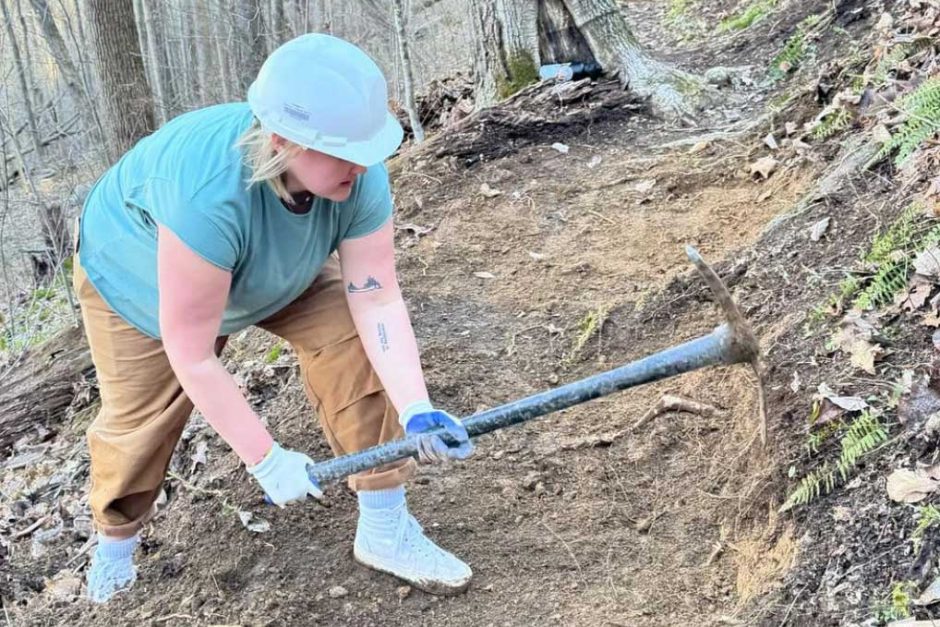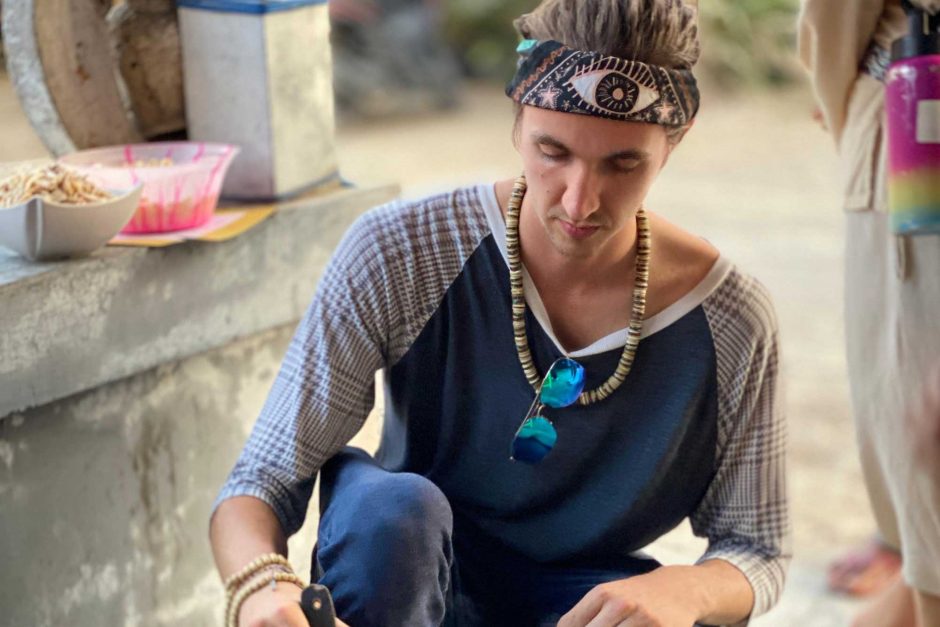Meet the new dean: Ilene Crawford ’92 (long version)
Ilene Crawford ’92 will become Cornell’s vice president for academic affairs and dean of the college on July 1. She will be the first chief academic officer to study under our distinctive One Course At A Time curriculum.
She said her heart skipped a beat when she saw the job announcement because she knew she was ready to help lead the college where she experienced her intellectual awakening.
Crawford is associate vice president for academic affairs at Southern Connecticut State University in New Haven, Conn. Prior to that appointment in 2015, she taught English, women’s studies, and interdisciplinary studies at the university for 15 years.
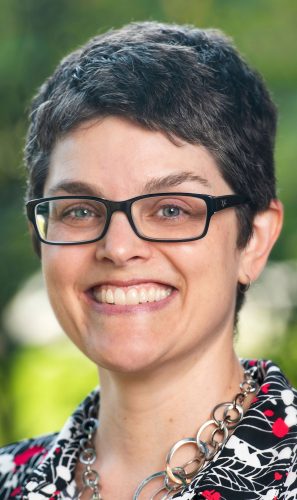 Crawford has published and presented widely in the U.S. and Asia on higher education reform, writing pedagogy, women’s literacy practices, and travel narratives. She holds a doctorate in English from the University of Wisconsin-Milwaukee, a master’s degree in English from the State University of New York-Binghamton, and a bachelor of special studies degree in classics from Cornell College.
Crawford has published and presented widely in the U.S. and Asia on higher education reform, writing pedagogy, women’s literacy practices, and travel narratives. She holds a doctorate in English from the University of Wisconsin-Milwaukee, a master’s degree in English from the State University of New York-Binghamton, and a bachelor of special studies degree in classics from Cornell College.
Her parents are Nancy Charleston Crawford ’69 and Marlin “Jack” Crawford ’69, and her husband is Robert McGuire ’92, a marketing consultant whose clients are learning technology startups, higher education, and nonprofits.
Knowing that the Cornell community is eager to know more about Crawford, Cornell Report editor Dee Ann Rexroat ’82 interviewed her by phone after her hire.
How will Cornell thrive as a liberal arts college in this era?
While I’m not committing myself to any particular course of action with these comments—it’s really important to me to work consultatively, so I’m really looking forward to setting a shared agenda—these are the opportunities that I’ve seen so far from my current vantage point.
When I visited campus, I talked a little bit about building a “flywheel” (crediting Jim Collins) for Cornell—committing to a series of actions that build on each other to build a growth engine for the college. Together, those actions demonstrate and communicate both the immediate and long term values of Cornell’s distinctive brand of a residential liberal arts education. The Cornell experience is highly personalized, it’s an applied liberal arts experience, it’s delivered in this immersive One Course At A Time format, and now it’s anchored by the Ingenuity core curriculum. Being able to demonstrate and communicate that value is going to help us attract the resources, the diverse faculty, and the diverse student body we are going to need to deliver a truly liberal education.
One thing we need to do is extend the distinctive Cornell experience to targeted new audiences that build on what our core strengths and our investments are. And thanks to some really hard, thoughtful work across the community, this work is already well underway. High school students are coming to Cornell for our growing summer programs, there’s success bringing international students to Cornell, students are transferring from community colleges and four-year institutions, and all of these students are looking for an educational experience that they’re not getting where they are. And the One Course At A Time model makes Cornell well-positioned to attract non-traditional students as well such as gap-year students, graduate students, continuing, and Chautauqua [non-degree adult] students.
Another thing we need to do is continue to examine the academic programs we offer and make good decisions about how and when to grow and change our offerings. What academic program offerings bring together the talents of our faculty, the quality of our infrastructure and facilities, and the learning experiences our students need to effectively address the challenges of the 21st century? I think Cornell’s historic commitment to interdisciplinary, personalized programs and innovative teaching is a great foundation for continued programmatic development.
Another thing we need to do is communicate and demonstrate how the components of a Cornell College liberal arts education are designed for students to thrive. It’s personalized, and Ingenuity is the framework for that—there’s experiential learning, there’s the major, there’s the Berry Career Institute and its supports, the mentoring and academic and wellness supports that students get in our community, and the athletics, and other extracurriculars that One Course At A Time makes possible.
Liberal arts colleges don’t need to change what we do, we need to change how we do it and who we serve. And at Cornell College, we need to put ourselves in the center of the map—we’ve got the tremendous advantage of a location that’s ideal for an examination of the 21st-century’s most pressing challenges, including climate change, the state of democracy, public health, and demographic change–and a location that’s ideal for a really navigable, accessible experience—with urban, and rural, and international, and domestic components to it.
What excites you about introducing the Ingenuity core curriculum?
A lot! Working with the faculty to refine Ingenuity’s components and assemble them into a well-functioning whole—that’s going to be exciting and fun work. The messaging around Ingenuity is extremely important. For example, the graphic that’s on the website really efficiently and effectively communicates Ingenuity’s components and their relationship to each other. Students, faculty, staff, administration — we’re all going to need to clearly see how all the parts of Ingenuity add up to the whole in order to fully embrace the program and for all of us to understand our place in it.
I’m excited about each of the components too, for the goals and the values that they reflect — like interdisciplinarity and how the components can intersect with the major and build on each other in ways that give students a good deal of agency in shaping their educational experience at Cornell. I love how that culminates in a portfolio – how that invites the reflection, the critical thinking, the storytelling experience that students really need to engage in in order to make meaning of and take ownership of their accomplishments as they prepare for their next steps. Students are going to be able to prepare this portfolio in the context of these fantastic supports we have available – the Center for Teaching and Learning and the Berry Career Institute – and I know that these portfolios are really going to be valuable for students as well as really inspirational for the entire community. These portfolios are going to give us even more reasons to be proud of our students and what they accomplish with the support of our outstanding faculty and staff. And they’re going to give us really important evidence to attract new students, retain current students, and gain additional support from alumni, donors, grants and foundations.
How has Cornell and One Course prepared you for this moment in your career?
I wouldn’t be who I am today without the investments that Cornell faculty made in me and some of the transformative out-of-classroom experiences I had. Cornell faculty saw potential in me that I didn’t necessarily see in myself yet and yet they took the time — and a great deal of time — not only in class but outside of class as well to really nurture and cultivate my skills and my interests.
My first semester at Cornell was hardly shock and awe but I gained real traction after that because I really started taking myself seriously as an academic. And I was able to do that because my professors took me seriously first. They saw something in me that I didn’t see in myself yet.
Out of the classroom is also where I first experienced things at Cornell that make me who I am today. I experienced for the first time the power of live theatre to capture the range of human experience, and that included seeing Shakespeare’s “King Lear” with the English Club in Spring Green, Wisconsin, at the American Players Theatre, as well as seeing my fellow students perform Caryl Churchill’s “Cloud Nine” in Armstrong Hall, which was equally transformative for me.
I would characterize One Course At A Time as immersive, and One Course At A Time taught me to do things completely and well, because I could completely focus on one thing without other distractions. I think most importantly though, One Course At A Time taught me I could learn anything I needed to learn quickly and effectively to get me where I needed to go next. I think most alumni would agree with me on that. That’s an amazing benefit of having the One Course At A Time experience.
And One Course At A Time taught me personally to love moving onto the next thing. I think it enhanced the kind of serial curiosity that I’ve always had as a learner.
How can we build on the strengths of One Course At A Time?
I really welcomed the discussion that I engaged in with faculty and staff while I was on campus—to question and take stock and think, is Once Course At A Time still right for us, can it be done differently, can it be done better? That kind of reflective work I look forward to continuing to engage in.
I think we can build on the strengths of One Course At A Time, and the messaging about it is key. I’ve heard One Course At A Time described as intense but I really prefer the term immersive. From my perspective as a student who experienced One Course At A Time in the late ’80s and the early ’90s, and then as a graduate student, a faculty member, and administrator at institutions on the traditional semester schedule since then, I can say that One Course At A Time’s greatest strengths are how it teaches and demonstrates the value of immersion and focus. And at this moment in 2020, I see One Course At A Time as very effective and very necessary counter-programming against a culture of distraction and interruption. It is a perfect mode of learning for this moment that we find ourselves in. In addition, the block itself is a visual image and when we think about it as a building block and visualize it in that way, that gives students a really powerful tool for planning and visualizing how each of their courses fits together into a coherent, personalized structure. And I think now with Ingenuity as the guiding framework, the visual power of it can be even more powerful.
How can we elevate our reputation?
Every member of the campus community can play a role in elevating our reputation and profile—whether it’s a student representing Cornell during an internship or civic engagement experience, or faculty and staff when they’re attending conferences, or alumni introducing Cornell to their personal and professional network. That’s work that we can all be doing every day. There are other advantages that we can gain by being included in the book “Colleges that Change Lives”—we can’t underestimate the number of students that learn about Cornell through CTCL. So it’s important to maintain our status in that publication while seeking new platforms that do similar work in introducing students and their families to Cornell.
In the environment we find ourselves in, visibility on a national level is going to be key to attracting a changing and shrinking student audience. For one, we’ve really got to make the most of where Cornell’s strengths align with national conversations about the value of a college education.
For example, U.S. News and World Report recently ranked Cornell #1 in social mobility—that is a great opportunity for Cornell! And it’s one that President Brand and the vice presidents are already making use of by bringing this to the alumni and asking for their support to grow the endowment so we can in turn grow a more economically diverse student body. This follows other recently emerging social mobility rankings and signals a broader interest nationally in how well colleges succeed in moving students up the socioeconomic ladder. So we really need to seize this moment of national interest and make full use of our social mobility achievements. For example, the Chronicle of Education is planning a yearlong focus on social mobility (examples: How to make college a better bet, The barriers to mobility, and Big donors increasingly focus on ways to spur social mobility). So what an opportunity for us to show the Chronicle of Education why we’re #1—what is our secret sauce? What are the ingredients of a Cornell education that result in our historic success with first-generation and Pell Grant students?
And I think finally, Ingenuity, our new core curriculum, is another excellent opportunity to elevate Cornell’s reputation. Students’ culminating portfolios, for example, are a critical opportunity for them to assess and make meaning of their Cornell experience but they’re also going to be these amazing demonstration projects that really show the value of a Cornell education that we want to use to attract new students and new allies.
How will Cornell thrive?
The many things that we do well include our innovative teaching practice. Students rank their experience with Cornell’s faculty very highly, and One Course At A Time means faculty work intensively with students both inside and outside of the classroom. There are many opportunities to capture and promote the really measurable student outcomes that can come out of that kind of immersive, intense experience.
When I was a student that it was customary during the third block for students as part of their Shakespeare class with Stephen Lacey ’65 to produce and perform an entire Shakespeare play—having the experience of inhabiting and performing a text for an audience alongside the traditional classroom experience of reading and analyzing a text allowed for a much deeper experience of interpretation and meaning-making—it’s a great example of the advantages of the teaching that can happen at Cornell because of One Course At A Time.
How do we cultivate a diverse community?
This is another area where really hard, thoughtful work has been going on across the campus community—the Diversity Committee’s work, for example. There are a couple of things I want to consider here.
First, in the student realm, I really applaud the move toward a test-optional application, because this allows for multiple measures of student achievement and potential. And that in itself is going to enhance the socioeconomic diversity of our applicant pool.
Cornell’s a community where you’ll be known and looked after, and you can experience four seasons and a vibrant small-town lifestyle while still having urban and international experiences, and that’s going to be really attractive for students that are living in other regions of the U.S. and internationally.
Having clear explanations of pricing and clearly presented evidence of return on investment is going to be critical and it has to show that, while our model of education appears expensive to deliver, it is affordable for students from all regions and all economic strata, and the results versus other models merit the upfront investment. But we’re going to need a larger endowment to do that work. Because the sticker price versus actual pricing of residential liberal arts colleges feels like such an insider’s game to first-generation students, that in itself is a barrier to applying at all, let alone attending. And the process of completing a FAFSA and then understanding and accepting an aid package is also a significant barrier. So we need to recognize and address those perceived barriers in our communication to students and their families.
Hiring is another area. In faculty hiring, we could consider demonstrated ability and interest in working with underrepresented students as a criteria. We could do that with staff hiring as well. But hiring really doesn’t start with a job advertisement. We have to be intentional about how we go to conferences and how we take time to look for emerging talent, take the opportunity to introduce Cornell to graduate students and early career faculty we encounter and follow up with them. And we can look to larger state institutions that are producing doctoral students that are within a few hours of Cornell and continue to build relationships with graduate directors and department chairs and explore how our faculty might assist in collaborating with or supporting or mentoring emerging talent there. Along those lines Cornell has taken advantage of some ACM programs that are designed to increase the number of faculty from underrepresented groups at ACM colleges.
But ultimately a diverse community is formed, it coheres, and it’s sustained because of how it operates and not just who is in it. So I think there’s a real opportunity with Ingenuity, because it has these components of intercultural literacy, and communication, leadership, civic engagement, all necessary components to build and sustain a diverse community. So I think there’s a real opportunity with Ingenuity then to be transparent and explicit about our desire to cultivate a diverse community and to experience some of these components of Ingenuity as a toolkit for doing so. Something that we explicitly build and critically reflect on in the context of our residential liberal arts college campus. The Hilltop can be a home base of sorts that is also going to be regularly informed by our students and faculty and our staff member’s travels and learning experiences elsewhere.
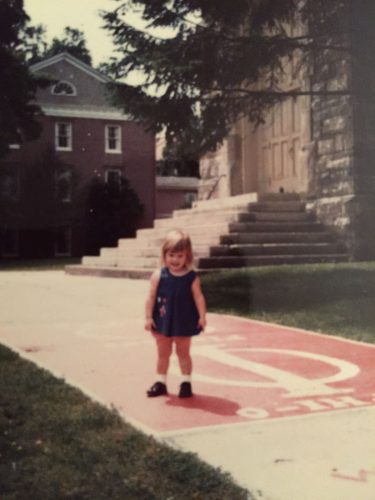
What do you see as your greatest challenge?
There are going to be a lot of challenges. I really do my best to frame challenges as opportunities and practice a growth mindset—we can learn whatever we need to do to thrive in the decade ahead. In the day-to-day that can be difficult but that really has to be the overall approach. I think the greatest challenge is going to be building and sustaining a residential undergraduate enrollment of at least 1200 students that represents the regional and socioeconomic diversity we need to achieve our liberal education goals—and doing that in the context of the demographic challenges that we know lie ahead. That’s a big challenge. So I want to approach the growth challenge that Cornell faces also as an opportunity to create sustainability. To do that we’re going to need diverse faculty and staff and the support, academic advising, career, and wellness resources, to enroll and retain and graduate a larger and more diverse student body. And to do that we’re going to need to demonstrate that while our model of education appears expensive, it is affordable for students from all regions and socioeconomic strata. And the immediate and lifelong results versus other models really merits that upfront investment. And we’re going to need to point to what specifically differentiates us from our competitors.
Looking ahead, what would you most like to accomplish as Cornell’s Dean?
Cornell changed my life, my parents’ lives, and my husband’s life. All three of them were first-generation college students, and all three of them are evidence of Cornell’s great history of conferring social mobility. That’s a legacy I feel bound to protect and extend to a more diverse body of students and their families for another generation.
What would you have said if someone told you in 1992 that you would be back someday as dean of the college?
Photographic evidence will show that I was about as far from dean of the college material as I could be in 1992—I was that student wearing Birkenstocks with wool socks all the way through the winter. If my future self had appeared before me at that moment, I wouldn’t have recognized myself!

